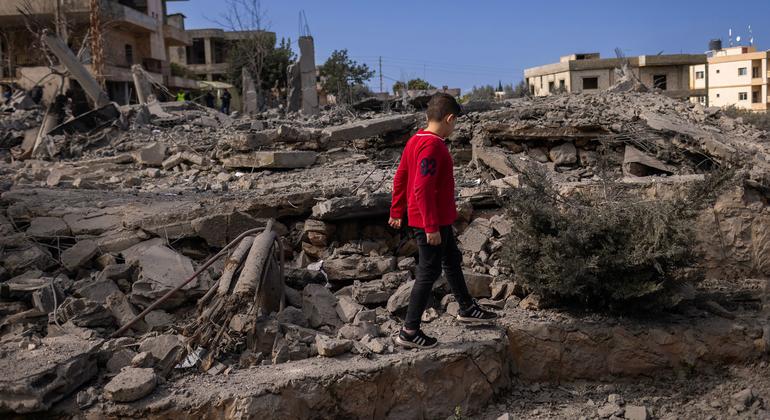A new era of crisis for children, as global conflict grows and inequality worsens

At the beginning of each year, UNICEF looks ahead at the risks children may face and suggests ways to minimize potential harm. latest report, Outlook for Children 2025: Building resilient systems for children’s futuresrequires strengthening national systems designed to minimize the impact of crises on children and ensure they can access the support they need.
Below is a breakdown of key trends to watch out for in 2025.
Double the number of children living in conflict zones
Increasing armed conflict will continue to pose serious risks to children in 2025. More than 473 million children – more than one in six globally – currently live in conflict-affected areas conflicts, with the world experiencing the highest number of conflicts since World War II. And the proportion of the world’s children living in conflict zones has doubled – from about 10% in the 1990s to nearly 19% today.
Amid growing geopolitical competition and the paralysis of multilateral institutions, both state and non-state actors appear increasingly willing to flout international law designed to protect protect civilians, with attacks on civilian infrastructure such as schools and hospitals becoming increasingly common.
Shedding light on decades of efforts to protect civilians is taking a devastating toll on children. In addition to the risks to their lives, children also face the risk of displacement and are threatened by hunger and disease. There are also significant risks to their psychological health.
The multilateral system has struggled to respond effectively. A concerted and sustained effort is needed to reverse the losses of recent years.

Children have lunch in a village in Tagal, Chad.
The financial system is not working
Developing country governments are struggling to finance vital investments for children due to slow growth, rising debt and insufficient tax revenues and development assistance.
Another important factor is the increasing public debt burden. Nearly 400 million children live in debt-ridden countries, and without major reforms this number will rise. The cost of servicing this debt is draining essential investments for children.
In 2025, we face important decisions on reforming the institutional framework, policies, rules and practices that govern the global financial system.

At Tabatinga -Amazonan State- in Brazil in October 2024.
The irreversible consequences of the climate crisis
Children are disproportionately affected by climate change and the effects on their development, health, education and well-being can be lifelong and irreversible.
2025 offers important opportunities to make progress towards global climate goals. This means strong and comprehensive policymaking, adequate and equitable financing and investment, strong legal and accountability frameworks, and effective monitoring systems.

Improve access to digital services
Several digital trends are poised to shape our future in 2025 and beyond. Rapid advances in emerging technologies will continue to shape every area of children’s lives from education and media to participation in the digital economy.
A key trend is the emergence of digital public infrastructure (DPI). dpi is a set of shared digital systems that can provide equitable access to public and private services. It enables the delivery of digital public services at scale, including for children, and is now being rapidly adopted around the world.
The Department of Planning and Investment has the potential to fundamentally change the way government serves and engages with its people, including children. It can also be central to promoting norms that promote development, inclusion, trust, innovation and respect for human rights.
However, persistent inequalities in digital access, especially in the least developed countries, are a major barrier to ensuring PP serves every child. There are also issues related to ensuring data harmonization across systems and ensuring adequate data protection and security.

Youth support at the 2023 G20 meeting (file)
Global governance under pressure
New and ongoing crises will continue to challenge the future of global governance.
In 2025, countries and institutions must address the critical question of whether the global multilateral framework is unified to form a cohesive response to our common challenges, at risk loss of collective action.
The direction we take will have a profound impact on efforts to protect the rights and well-being of children around the world.
Children’s rights must be given top priority
The conclusion drawn by the report’s authors is the critical importance of adopting and promoting systems that improve the lives and prospects of children.
These systems must embody principles of inclusion, equity and accountability, ensuring that children’s rights and needs are always put first. And just as importantly, they must not only address current global challenges but also anticipate and prepare for what lies ahead.




